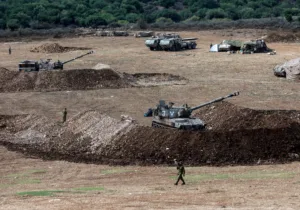The Battle for Aleppo is over. The city has fallen to Bashar Al-Assad’s forces and rebel-controlled eastern Aleppo, which has held out for four years, no longer exists. The Assad regime and its Russian, Iranian, and Shi’a paramilitary allies can claim victory. What does this mean for Syria and her people, the region, and American involvement in the Middle East? Consensus might be boiled down to a few points.
First, the prospect of shoving the Assad regime from power by force is over. This has been, arguably, a foregone conclusion when the Russian air force entered war in 2015. The rebellion possessed nothing to contend with Russian air power and the West failed ever to provide them with the means to do so. With Aleppo’s fall, Assad’s ascendant trajectory is essentially sealed. While the regime controls a minority of the country’s physical territory, about a third, what they hold includes all the major cities including the capital of Damascus, the entirety of the coast, and the majority of the population.
Second, the rebellion continues and rebels maintain control over rural parts of Aleppo, the Idlib province, and significant pockets elsewhere. Some believe the regime will now focus its counteroffensive on the Idlib province, one of the birthing points of the rebellion. Idlib is controlled by two Salafi jihadist militias–Ahrar al-Sham and Jabhat Fateh al-Sham—which will allow the regime to package its assault there as a battle against al-Qaida. However, all of this brings Turkey into the center of the frame. Ahrar al-Sham operates with close-ties to Turkey and the rebels on the outskirts of Aleppo have cooperated directly with the Turkish army.
While Turkey’s support and cooperation will for the rebels of these regions will, likely, have something of a moderating influence on assaults against these areas, such complications have a way of being both unpredictable and highly combustible. The recent assassination in Ankara of Andrey Karlov, the Russian ambassador to Turkey, has strained relations between the two countries. While the murder, carried out partly in the name of Aleppo, could draw the two counties closer together in a shared fight against terror, it’s not unfathomable to imagine it leading to new strains, especially as the event is tied directly to Syria. History, indeed Russian history, is full of examples of adversary nations using such events as a pretext for kinetic response.
Third, the incoming American administration’s response is hard to predict. On the one hand, President-elect Trump has surrounded himself with relatively hawkish figures deeply skeptical of Iran, particularly Generals Mattis, Flynn, and Kelly. On the other hand, Trump himself has made plain an interest in coordinating with Russia against ISIL. Russia, of course, is aligned with Tehran. Much will depend on which side wins out, or what blend is created between them.
Politics in the Middle East is never straight forward. The Syrian civil war alone contains nearly a dozen separate conflicts involving an array of rebel factions fighting for various kinds of control. Slow to react to the complexity, failing to enforce redlines drawn against atrocity, and signaling at every step that we were not willing to pay the costs of protecting civilian innocents and to defend humanitarian values, American policy in the region has been a continued, humiliating, and shameful failure.
Western hesitance has not worked. We need a new assessment of, and clearly articulated and power-backed demonstration of, the values and principles we believe are worth defending.
As the crisis continues, we asked Joe Carter to provide an overview of the Syrian conflict in general as a means of situating the fall of Aleppo in its proper context. Here he offers ten things you should know about the ongoing humanitarian crisis:
- In 2011, during the Middle Eastern protest movement known as the Arab Spring, protesters in Syria demanded the end of Ba’ath Party rule and the resignation of President Bashar al-Assad, whose family has held the presidency in the country since 1971. In April 2011, the Syrian Army was sent to quell the protest, and soldiers opened fire on demonstrators. After months of military sieges, the protests evolved into an armed rebellion that has spread across the country. Although the conflict was originally between factions for and against President Assad, the civil war has broadened into a battle between the country’s Sunni majority against the president’s Shia Alawite sect. The conflict has drawn in neighboring countries and world powers and led to the rise of jihadist groups, including Islamic State (ISIS).
- Aleppo is the largest city in Syria and contains the country’s largest population of Christians. Aleppo is believed to be one of theoldest continuously inhabited citiesin the world behind only Damascus (also in Syria) and Byblos (Lebanon). Prior to the Syrian civil war, Aleppo contained about 10 percent of Syria’s population (roughly 2.3 million people).
- The battle for Aleppobegan in mid-July 2012, when anti-government rebels gained control of several districts within the city. Since then the city has been divided between the government-held west and rebel-held east. Beginning at the end of 2013, the Syrian government began aerial bombing of the eastern sections of the city, a tactic that has caused a humanitarian crisis that has disproportionately affected the city’s children.
- Syria has a young population (median age is 24.1). While about half of the nearly 5 million refugees who have fled Syria are children,Unicef estimatesthat about eight million children remain in the country. Save the Children also estimates about 40 percent of the besieged population in eastern Aleppo are children. As Save the Children spokeswoman Carol Anning told the BBC, in war you should expect to see a much higher population of adult males being killed in frontline action. “But what we have seen in Aleppo in the last couple of days is totally indiscriminate bombing from the air,” Anning says. “So children are impacted just as much or more than adults in those situations.”
- A 2015 report by the UN’s Human Rights Councilnotes “the conduct of an ever-increasing number of actors is characterized by a complete lack of adherence to the norms of international law.” A prime example is the use of sexual violence against girls and women. The report says, “Women and girls were found to have been raped and sexually assaulted in government detention facilities, in particular in the investigation branches of the Military Intelligence Directorate and prisons administered by the General Security Directorate in Damascus. State officials have perpetrated rape, a crime against humanity.” Rebel groups have also committed similar atrocities, with girls and women kept as slaves and “subject to horrific and repeated sexual violence. Girls and women in ISIS-controlled areas live in fear of forced marriage to the fighters.”
- Since 2012, the Syrian government has used aerial “barrel bombs”(aka “flying IEDs”)—often dropping them on civilian populations. According to the Weapons Law Encyclopedia, a barrel bombrefers to an improvised container (e.g. an oil drum or gas cylinder) dropped from an aircraft and filled with explosive, incendiary, or other substances and often includes additional materials to increase fragment projection. The UN claims the Assad regime has dropped barrel bombs containing chemical agents, likely chlorine, on “crowded areas, such as bakery lines, transportation hubs, apartment buildings, and markets.” The use of such weapons against civilian populations or containing chemical weapons clearly violates international laws.
- Throughout the conflict, anti-government forces have relied on a variety of terrorist tacticsagainst civilians. The groups have kidnapped women and children—sometimes holding them hostage for years—to use them for ransom or prisoner exchanges. They have also used suicide and car bombs attacks against civilian and government targets. Rebel groups associated with ISIS have executed civilians who refuse to recognize their self-proclaimed rule, publicly amputated limbs as punishment for theft, and whipped residents for smoking and trading during prayer times.
- Several countries have used the crisis as a proxy war for their own interest. Iran and Russia have consistently backed President Assad against the rebels. In 2015, the Russian Federation Council authorized the use of military force, which has mostly consisted of air strikes against anti-government forces. (Russia began the aerial attacks in September 2015, but claims theyhave not bombed Alepposince October 18 of this year.) As the BBC notes, the Iranian government is also believed to be spending billions of dollars a year to bolster the Syrian government. Lebanon’s Shia Islamist Hezbollah movement has also backed the Syrian government by sending fighters to the area.
- The U.S. is also involved in the fight against Islamic State (ISIS) in Syria. This weekend Secretary of Defense Ash Carter said he would be sending up to 200 additional US troops to the country to help train and assist US-backed local forces that are driving towards ISIS’ self-declared capital in Raqqa, Syria. In April, President Obama set a cap of 300 for the number of military advisers permitted in Syria. The troops include special operations forces, trainers, advisers, and explosive ordinance disposal teams.
- The civil war has forced 11 million people—half the country’s pre-crisis population—to flee their homes. About 7.6 million Syrians have been internally displaced within the country, and 4 million have fled Syria for other countries. The result is one of the largest forced migrations since World War II. Since the conflict began, the United States has accepted nearly 12,000 Syrian refugees, including 10,000 in 2016.
—
Joe Carter is an adjunct professor of journalism at Patrick Henry College, an editor for several organizations, and the author of the NIV Lifehacks Bible.
Photo Credit: In Aleppo, Karm al Jabal. This neighborhood is next to Al Bab and had been under siege for 6 months when this photo was taken on 4 March 2013. By Basma for United Kingdom Foreign & Commonwealth Office, via Flickr.






